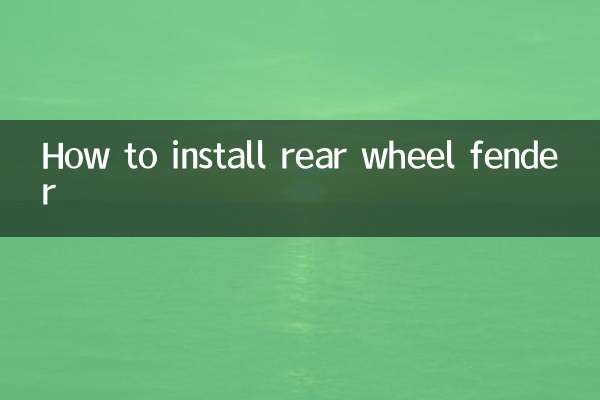How to install solid tires
Solid tires are widely used in industrial vehicles, forklifts, trailers and other fields due to their durability and maintenance-free characteristics. This article will introduce in detail the installation steps, precautions and FAQs of solid tires to help you successfully complete the installation.
1. Preparation work before solid tire installation

Before installing solid tires, you need to make the following preparations:
| Project | Description |
|---|---|
| Tool preparation | Wrenches, crowbars, lubricants (such as soapy water), jacks, rubber hammers, etc. |
| tire inspection | Confirm that the tire model matches the wheel hub, and check whether the tire is damaged |
| Wheel hub cleaning | Remove any rust or dirt from the wheel hub and make sure the mounting surface is flat |
| security measures | Make sure the vehicle is stable and pay attention to safety when using the jack |
2. Solid tire installation steps
Here are the detailed installation steps for solid tires:
| steps | Operating Instructions |
|---|---|
| 1. Remove old tires | Use a wrench to loosen the hub bolts and remove the old tire |
| 2. Clean the wheel hub | Use a wire brush or sandpaper to clean the wheel hub mounting surface to ensure there is no debris |
| 3. Lubricate the inner wall of the tire | Apply lubricant (such as soapy water) to the inner wall of the tire to facilitate installation |
| 4. Align wheel hub | Align the tire to the center of the wheel hub to ensure that the tire and wheel hub are fully fitted |
| 5. Press in the tire | Use a rubber mallet or pry bar to gently tap the edge of the tire and gradually press into the hub. |
| 6. Check installation | Make sure the tire is fully installed and not offset or loose |
| 7. Fastening bolts | Tighten the hub bolts in diagonal order to ensure even force |
3. Installation precautions
Pay attention to the following when installing solid tires:
| Things to note | Description |
|---|---|
| Avoid brute force installation | Do not use sharp tools to force it in to avoid damaging the tire |
| Lubricant selection | Use neutral lubricants (such as soapy water) to avoid tire corrosion |
| Check air pressure (if applicable) | Some solid tires need to be inflated. After installation, check whether the air pressure meets the requirements. |
| Regular inspection | Check the tires regularly for looseness or wear after installation |
4. Frequently Asked Questions
Here are answers to frequently asked questions about solid tire installation:
| question | Answer |
|---|---|
| Do solid tires need to be inflated? | Most solid tires require no air pressure, but some models may require a small amount of air pressure |
| What should I do if the tire is difficult to press in during installation? | You can increase the amount of lubricant or use professional installation tools to assist |
| What is the service life of solid tires? | Usually 3-5 years, depending on usage environment and load |
| How to tell if the tires are properly installed? | The edge of the tire should fit perfectly into the wheel rim with no gaps or protrusions. |
5. Summary
Although the installation of solid tires is relatively simple, you still need to strictly follow the steps to ensure safety and installation quality. Through the detailed introduction in this article, I believe you have mastered the installation skills of solid tires. If you encounter problems during installation, it is recommended to consult a professional or contact the tire supplier for technical support.
Properly installed solid tires can significantly improve vehicle performance and safety while reducing maintenance costs. Hope this article helps you!

check the details

check the details